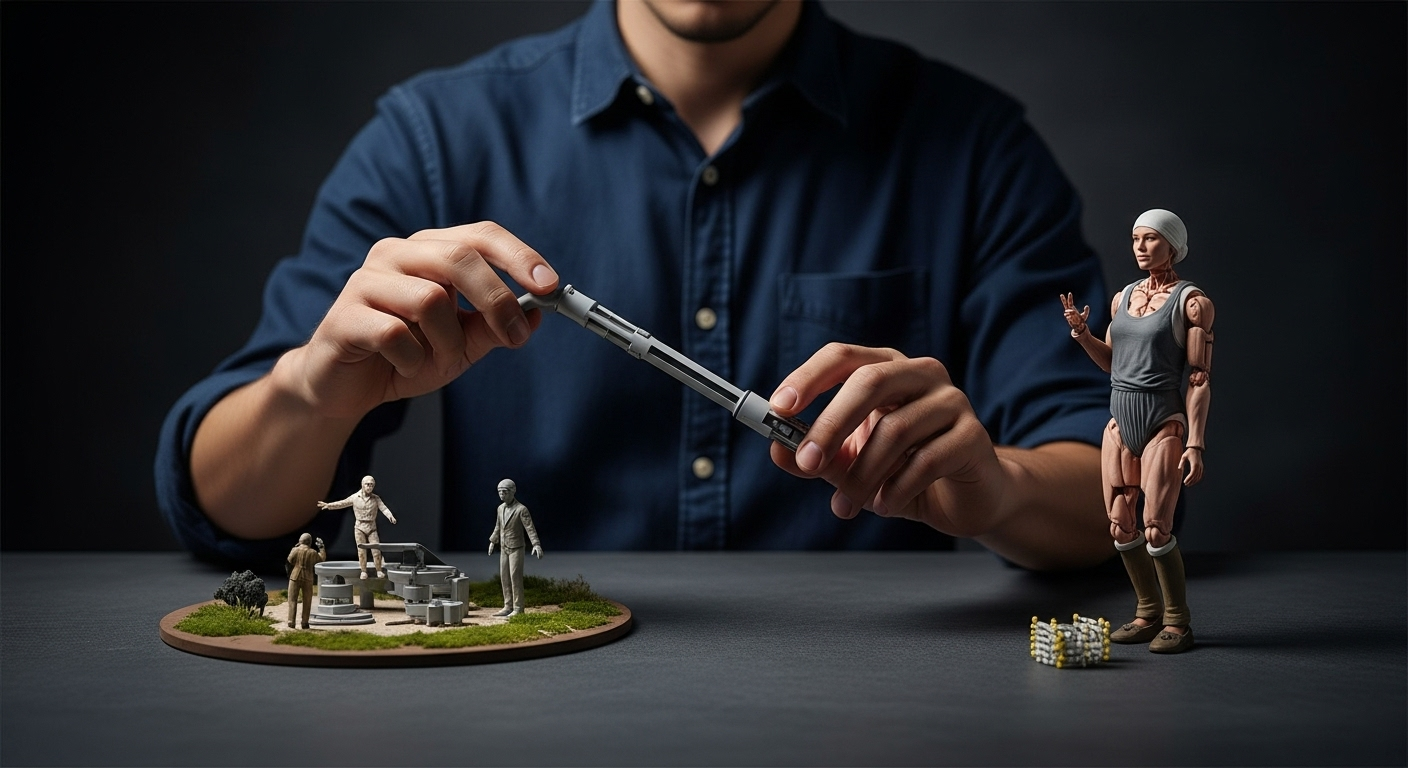The Subtle Charm of Miniature Art in Modern Culture
In a world dominated by grand spectacles and larger-than-life experiences, a quiet revolution is unfolding in the arts. Miniature art, once relegated to niche collectors and craft enthusiasts, is experiencing a renaissance that's capturing the imagination of creators and audiences alike. This resurgence is not just about tiny paintings or sculptures; it's a movement that's redefining how we perceive scale, detail, and craftsmanship in contemporary art.

Contemporary Revival and Digital Age Impact
Today’s miniature art movement is experiencing a revival, fueled by social media platforms that allow artists to showcase their minute masterpieces to a global audience. Instagram and TikTok have become virtual galleries, where artists display time-lapse videos of their creative process, captivating millions with their precision and patience. This digital exposure has democratized the art form, inspiring hobbyists and professional artists alike to explore the challenges and joys of working in miniature.
The Psychology of Small: Why Miniatures Captivate Us
The appeal of miniature art taps into fundamental aspects of human psychology. There’s a sense of wonder and control that comes from viewing a perfectly crafted tiny world. Psychologists suggest that miniatures allow us to process and manage complex emotions and ideas by presenting them in a manageable scale. This cognitive engagement explains why miniature art installations and dioramas can be so emotionally powerful, despite their size.
Miniature Art in Popular Culture and Entertainment
The influence of miniature art extends beyond traditional artistic circles. In film and television production, miniatures continue to play a crucial role despite the advent of CGI. Movies like Wes Anderson’s The Grand Budapest Hotel showcase the charm of miniature models in set design. Meanwhile, the popularity of miniature cooking videos and tiny food challenges on social media platforms highlights the broader cultural fascination with all things small.
Challenges and Innovations in Miniature Creation
Creating miniature art presents unique challenges that push artists to innovate. Working at such a small scale requires specialized tools and techniques. Some artists use microscopes to achieve incredible detail, while others develop steady-hand techniques that border on meditative practices. The materials used in miniature art are also evolving, with some artists experimenting with nano-materials and 3D printing to achieve unprecedented levels of detail.
The Economic Landscape of Tiny Treasures
As interest in miniature art grows, so does its market value. Collectors are increasingly drawn to these small-scale works, appreciating both their artistic merit and their space-efficient nature. Auction houses report a growing demand for high-quality miniatures, with some pieces fetching surprisingly high prices. This economic trend is encouraging more artists to consider working in miniature, further enriching the diversity of the art form.
Educational and Therapeutic Applications
Beyond its aesthetic appeal, miniature art is finding applications in education and therapy. Schools are using miniature projects to teach students about history, architecture, and even science. In therapeutic settings, creating miniatures is being explored as a form of art therapy, helping individuals process trauma or manage anxiety by focusing on small, controllable creations.
Environmental Considerations and Sustainability
The miniature art movement also intersects with growing environmental concerns. Working in miniature naturally requires fewer resources, aligning with sustainability trends in the art world. Some artists are pushing this further by creating miniatures from recycled materials or using their work to comment on environmental issues, demonstrating that even the smallest art can address the biggest global challenges.
The Future of Miniature Art: Nano-scale and Beyond
As technology advances, the boundaries of miniature art are being pushed to the microscopic level. Nano-art, created using electron microscopes and atomic force microscopes, represents the cutting edge of miniaturization in art. This merging of art and science opens up new possibilities for artistic expression and scientific visualization, blurring the lines between disciplines in exciting ways.
In conclusion, the resurgence of miniature art in modern culture represents more than just a trend; it’s a reevaluation of scale in artistic expression and a celebration of meticulous craftsmanship. As we continue to navigate an increasingly complex world, these tiny creations offer a moment of focus, a sense of wonder, and a reminder that sometimes, the most impactful experiences come in the smallest packages. The miniature art movement challenges us to look closer, think smaller, and appreciate the beauty in the details of our world.





